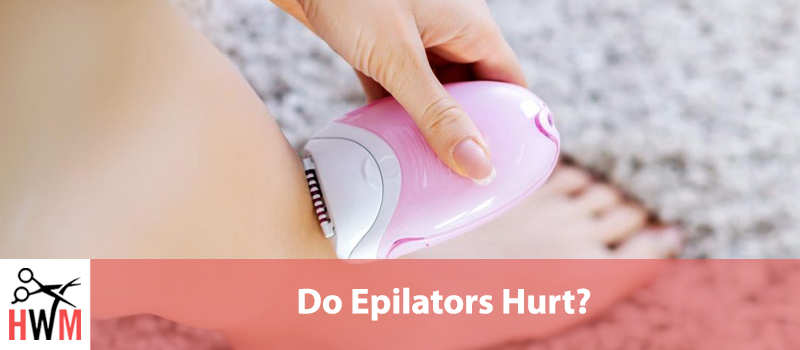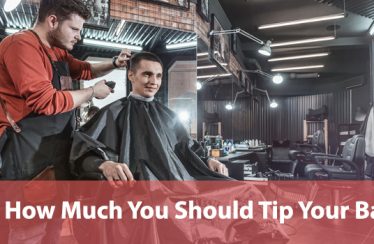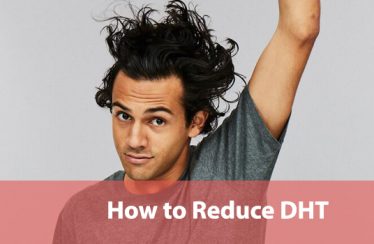Anyone who has ever removed hair either by tweezing, shaving, wax, or any other method know that there is some discomfort with some types of hair removal. The recent rise in epilators lead to some interesting conversations on our end, so we thought we would delve into whether epilators hurt while removing hair. We’ll figure out the differences you may find between epilators available and give some hints and tricks to decreasing any pain that you may experience while using an epilator.
- What is an Epilator?
- Types of Epilators
- Why it may Hurt to Use an Epilator
- Ways to Decrease Pain from Using an Epilator
- How to Use an Epilator
- Advantages of Using an Epilator for Hair Removal
- Disadvantages of Using an Epilator for Hair Removal
- Additional Tips for Using Epilators
What is an Epilator?
An epilator is an electric hair removal device. Unlike traditional electric shavers that lift and then cut the hair, an epilator remove hair by grasping and pulling the hair from the hair follicle.
This way of removing the hair is very similar to using manual tweezers. Where an epilator is a little different is that it operates on a high-speed motor for extremely fast removal. Anyone that has ever used a tweezer knows that the faster you remove the hair you are less likely to experience pain.
Types of Epilators
There are a number of epilators available on the market, and in general, they all work the same way. However, there are a few differences you may want to be aware of, and they may include:
Spring Epilators
Spring epilators were the first commercially available epilators. They feature rotating coils that open and close trapping the hair between the coils and pulling the hair. These epilators are generally more painful than other types due to the lower speed at which the hair is removed.
Disc Epilators
These epilators feature multiple rotating discs that are angled so that as they rotate, they come together to grasp and lift the hair. They then release the removed hair as they angle away from each other. Disc epilators usually resemble the older style spring epilators, in that they have a wide bar of discs that resemble a coil.
Disc epilators will vary depending mostly on the number of disc pairs. Some epilators only have a few rotating discs for precision hair removal, while others feature a large number of discs for removing hair from larger areas faster and easier.
Tweezer Epilators
Tweezer epilators are similar to disc epilators in that they use multiple discs to remove the hair. However, tweezer epilators feature a three-disc hair removal system. The three discs include on fixed disc surrounded by two angled discs. The fixed disc ensures more fluid and faster hair removal.
Additionally, most tweezer epilators feature bi-directional heads that actually pull the skin slightly just before the discs grab and remove the hair. Like older style disk epilators, the tweezer epilators have a number of three-disc heads.
Where they are drastically different, is that tweezer epilators bi-directional heads are usually offset slightly. This helps to provide for the removal of more hair with each pass. This design also makes removing even superfine or shorter hair easier as well. The majority of epilators available today are tweezer epilators.
Corded/Cordless Epilators
Just like traditional electric razors, epilators can be found in both corded and cordless designs. When choosing whether to buy an epilator, you will want to decide how you are most likely to use it. Being attached to a cord may mean staying closer to an outlet, however, you are probably sacrificing a little bit of power when choosing a cordless version.
Wet/Dry Epilators
Another feature similar to electric razors is that epilators may often be found with wet/dry features. This means you can use your epilators in the bath or shower if you choose. The biggest advantage of choosing a wet/dry epilator is that you can use several methods to soften the hair and loosen the hair from the follicle for easier, less painful hair removal.
Manual Epilators
Believe it or not, there are manual spring epilators still available. These low-tech epilators feature a tightly coiled spring that opens when you bend it, and then when you straighten and twist the spring it grabs and pulls the hair. This is by far the most pain epilator. A manual spring does offer the most precision, but the painful, slow hair removal process also means you will likely want to stop way before you finish.
Why it may Hurt to Use an Epilator
Hair is too Long
Hair that is long will not be easily grasped by an epilator. Instead, the hair is more likely to be lain over. If the epilator happens to grasp the hair, it may even be trapped between the stationary disc and the skin. This can cause a painful pulling sensation since the hair is not pulled away quickly. Trimming longer hair may help to decrease the pain associated with epilating longer hairs.
Thick Hair
Individuals with exceptionally thick body or facial hair may find that using an epilator can be quite painful, as the thicker hair causes the epilator to work harder and pull longer on the hair to remove it.
Thick hair can be softened and taking the time to exfoliate and warm the skin beneath can help to reduce the pain that epilating thick hair may cause. You can also take extra steps to ensure the skin is properly hydrated and moisturized as well. However, always make sure not to use a moisturizer for 24 prior to using an epilator.
Sensitive Skin
Individuals with sensitive skin or a low tolerance for pain may want to forego the use of an epilator completely. While the technology is always improving, the general premise of an epilator can still cause skin irritation and some pain, even if tolerable to most.
If this describes you, but you are deadest on using an epilator, use all of the tips in this guide to help reduce the amount of pain and skin irritation. You may also follow up your epilating session with a calming moisturizer to help soothe the skin and decrease pain.
Cold or Extra Dry Skin
When your skin is cold or excessively dry it tightens, that also means that the hair follicles will tighten around the hair shaft. This will result in increased pain if you choose to use an epilator when you are experiencing cold or dry skin. You can decrease this by taking a warm shower or apply a warm compress to the area just before epilating. Make sure to dry the skin completely if your epilator does not contain the wet/dry feature.
Ways to Decrease Pain from Using an Epilator
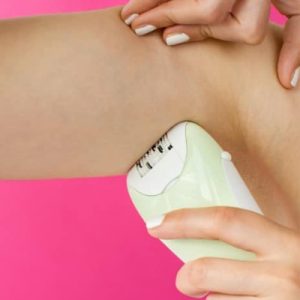 Some of these may be repeats, however, we wanted to include them in their own section for those individuals that prefer to skip around and head right to the answers. So, here are a few tried and tested ways to decrease the pain you may experience while using an epilator. While we do not guarantee a pain-free experience, these tips should at least help reduce your pain.
Some of these may be repeats, however, we wanted to include them in their own section for those individuals that prefer to skip around and head right to the answers. So, here are a few tried and tested ways to decrease the pain you may experience while using an epilator. While we do not guarantee a pain-free experience, these tips should at least help reduce your pain.
Trim Longer Hair Before Epilating
Taking the time to trim longer hair will allow the epilator to work more efficiently, thus less pulling and resulting pain. Refer to the manufacturer’s recommendations regarding the length that hair should be in order to achieve the best possible results.
Ibuprofen
Individuals that can, may want to consider taking ibuprofen, or similar inflammation or pain reducer 30 minutes to an hour before using an epilator. This may help to reduce the pain slightly as well as help you to relax. When you are relaxed the muscles loosen allowing the pain receptors in the brain to calm as well. Stress can increase pain.
Wait for Skin to Heal if Irritated
Skin that is damaged or irritated should be allowed to heal completely before using an epilator. Epilating can lead to further irritation, trauma, or even an increased risk of infection. Just wait while your skin heals, you will be happier in the long run.
Warm the Skin
Taking a warm/hot shower or bath just before using an epilator does a lot for reducing pain. The warm/hot water softens the hair and expands the hair follicles, loosening the grip on the hair shaft. This allows for a smoother removal of the hair, thus less painful.
Conversely, using a cool/cold compress after using an epilator can also reduce inflammation and irritation, as well as help to seal the pores, decreasing the risk of infection.
Moisturize 24 Hours Before Using an Epilator
As we mentioned, dry brittle hair and dry skin do not make a great combination for using an epilator without experiencing pain. Using a quality moisturizer on the area that you plan to epilate will help to soften the skin and hair making removal significantly easier which should also reduce the pain as well.
Go Slow
This is perhaps the most important part of reducing pain when using an epilator. People are more familiar with electric razors that are often used in quick passes or circles on the skin to shave the hair. Epilators work completely differently and as such, should be used differently. Going slower with the epilator will also make sure you are not overloading the epilator, allowing it to work more efficiently.
Working in small areas at a time, pull the skin tightly, and pass the epilator slowly across the area. Some epilators can be used in two directions; however, most are not designed to be run in circles. If you have hair that grows in multiple directions, shifting the entire epilator direction while only moving the epilator backward and forwards will eventually catch every hair.
How to Use an Epilator
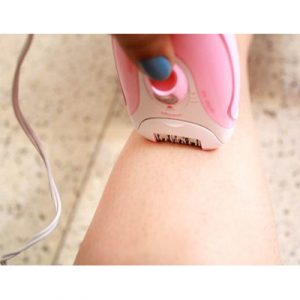 There are a few steps involved in using an epilator. Following these steps will also decrease the pain that may occur with epilating and provide a better hair removal experience.
There are a few steps involved in using an epilator. Following these steps will also decrease the pain that may occur with epilating and provide a better hair removal experience.
Before Use
Especially the first time, you will have a better experience if you take a hot shower and gently exfoliate the area where you plan to use the epilator. The heat helps to soften the hair and follicles, which leads to cleaner hair removal; dry brittle hair is more likely to break off then be pulled from the hair follicle. Gentle exfoliation helps to remove any dead skin or oil that would limit the epilators ability to efficiently grasp the hair. It will also ensure a cleaner hair removal leading to less cleaning of the epilator afterward.
Hold the Skin
Just like you would hold the skin taut while waxing for easier hair removal, the same is true for epilating. By holding the skin and working in small sections, it allows for quicker and easier hair removal; thus, less pain.
Move in the Opposite Direction of Hair Growth
Hair will lift easier if you are moving against the direction the hair grows naturally. Individuals whose hair grows in multiple directions may have to make passes in multiple directions in order to make sure that all the hair is removed.
Advantages of Using an Epilator for Hair Removal
Long-Lasting Hair Removal
The biggest advantage of using an epilator for hair removal is that the results last significantly longer than shaving. In some cases, the results may even match that of hard waxing hair removal.
Hair Growth
Over time, with regular use, many individuals notice that the hair that does grow back after using an epilator is thinner and grows slower. Some lucky individuals even reach permanent hair removal over time using an epilator.
Efficient
Once you get the hang of using an epilator is becomes a very quick and efficient way of removing unwanted hair. For many individuals, it becomes a part of their regular grooming routine, and they even report becoming more and more desensitized to the pain they felt originally the more they use their epilator for hair removal.
All Over Hair Removal
Unlike other hair removal methods, an epilator is safe for removing hair anywhere ON the body. This flexibility means you can have the hair free experience you want without having to use multiple devices, waxes, or creams. The only areas that epilators may not be effective are internal hairs, such as nose hairs, although there are special epilators designed just for the nose and the most sensitive areas of men and women.
Disadvantages of Using an Epilator for Hair Removal
We could not list the potential advantages without included the dark side as well. Here are a few disadvantages associated with using an epilator for hair removal. Keep in mind that individual experiences may vary, and you may have a better or worse experience.
Potentially Painful
We can’t avoid it any longer, yes for many individuals there is a potential for pain when using an epilator. Though long-time epilator users report that the newer models produce significantly less pain than early epilators. And every type of electric epilator is less painful than a manual epilator; dare you to try it!
Ingrown Hairs
The oddest thing about ingrown hairs is that people generally either fight them no matter which hair removal method they use, or they never have to deal with ingrown hairs. In general, individuals that fight ingrown will probably notice they may increase while using an epilator. However, this can be combated using the exfoliation tips that we talk about throughout this article. Proper exfoliation can potentially completely eliminate current and potential ingrown hairs.
Cost
When you compare epilators side by side with other hair removal methods, they will likely appear more costly. However, we challenge you to compare them on the effectiveness and long term potential as well as cost and you will quickly see that the benefits will likely outweigh the cost.
There are some fairly reasonable epilators, however, they usually have significantly fewer discs, this means a lot more work to remove hair from larger areas. Though individuals just looking to use an epilator on their face may want to consider one of these more compact versions.
Skin Irritation/Redness
Epilators can cause some irritation to the skin as well as some redness. This varies greatly from user to user, and even from epilator to epilator. For individuals that experience extreme irritation, following the tips below may help to reduce irritation.
Alternatively, you may have to try a different epilator or hair removal method altogether. Epilators are not for everyone, so do not be disappointed if you are not able to use one without excess irritation. Your comfort should be a priority!
Additional Tips for Using Epilators
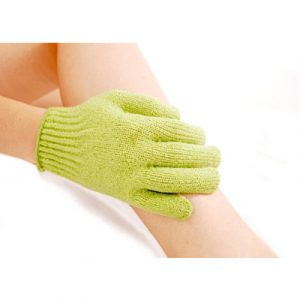 Exfoliate the Skin: Exfoliating the skin just before using an epilator is very important. However, it is also important to exfoliate the skin between epilating sessions. Gentle exfoliation helps to remove ingrown hairs that often result from traditional shaving. Exfoliating also removes oil and dead skin that builds up or gets deep into the pores.
Exfoliate the Skin: Exfoliating the skin just before using an epilator is very important. However, it is also important to exfoliate the skin between epilating sessions. Gentle exfoliation helps to remove ingrown hairs that often result from traditional shaving. Exfoliating also removes oil and dead skin that builds up or gets deep into the pores.
Trim longer hair: Taking the time to trim longer hair may seem counterproductive. Why not just shave it off? Epilators are designed to be pressed against the skin. Longer hair will end up being bent over and lain against the skin, making it harder for the epilator to grasp and remove the hair. By trimming you ensure the epilator will work efficiently. Follow the manufacturer’s recommendation for the length of hair that your epilator is designed to remove.
Match Speed to The Epilator: Epilators do rotate at a fast speed; however, it is important to remember that the discs have to make a full rotation, and the more hairs they pick up, the farther apart the discs will be forced. Moving the epilator across the skin too quickly will result in less hair removal, requiring multiple passes. By taking the time to learn the speed the epilator works most efficiently, you will have to make fewer passes across the skin for the best results.
Be Consistent: Not only do we mean to be consistent in using your epilator on a regular basis. This will help to reduce hair growth and thickness over time. Additionally, this refers to the amount of coverage you make with your epilator. It may be tempting to run the epilator quickly over the skin, especially large areas like the legs or back. However, you will see better results if you work in smaller areas and use consistent speed, pressure, and a number of passes.
Do NOT Overuse: Over time, using a powerful epilator consistently can reduce hair growth and thickness. But there are some downfalls to using an epilator. The disadvantages mentioned above goes into more detail, however, the biggest downfall of overusing an epilator is the risk of infection and skin irritation. When you use an epilator, you expose the hair follicle to potential bacteria. No amount of hair-free skin is worth an infection. You can offset this particular risk with proper cleaning and use, but nothing is guaranteed.
Clean Your Epilator After Every Use: As mentioned above, epilating does include risk of skin irritation and possibly even infection as complete removal of the hair from the root does cause slight trauma to the follicle and the area does end up exposed even if only momentarily. You can help to decrease the potential risk by making sure to thoroughly clean your epilator after every use. Follow the manufacturer’s recommendation for cleaning your epilator. You can also use a spray alcohol disinfectant spray after cleaning to help kill any remaining bacteria. Allow the epilator to dry completely after each use before storing the epilator.
Spotty Hair Growth: The design and intent of epilators mean that over time, some individuals may see a noticeable reduction in hair growth rates as well as decreased thickness. While these may sound great, individuals that do not desire a more permanent hair removal may want to avoid using an epilator. Though you can potentially reduce these effects over time, we wouldn’t suggest risking it.
Conclusion
While it is true that epilators can be painful for some individuals, we hope that this guide has provided you with valuable information to help offset, decrease, or even potentially eliminate the pain that can result from using an epilator. Using an epilator remains one of the longest established semi-permanent hair removal techniques. And as technology advances, you can be sure they will continue to be less painful.
